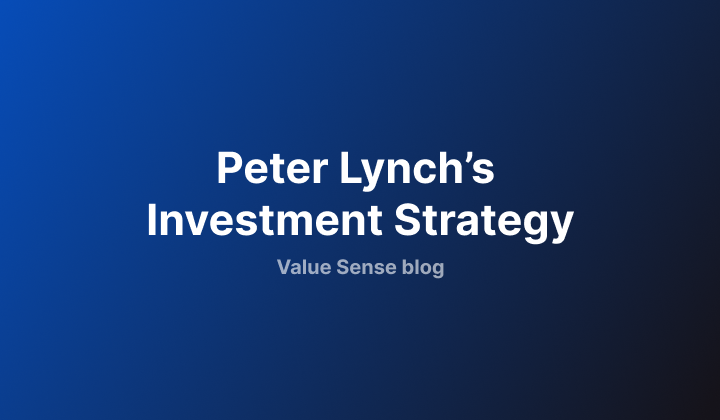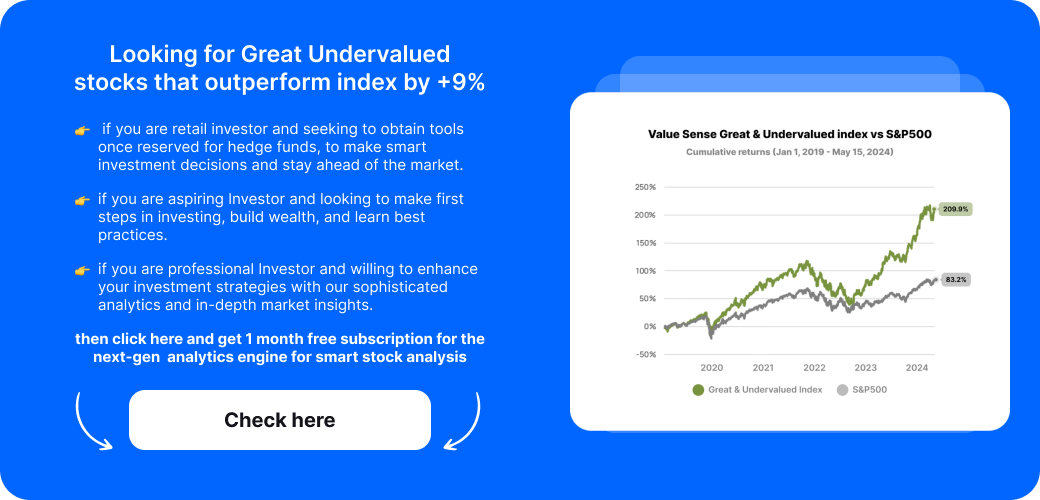Peter Lynch’s Investment Strategy: How You Can Win in the Stock Market

When it comes to successful stock market investing, few names carry as much weight as Peter Lynch. Known for his remarkable management of Fidelity's Magellan Fund, where he achieved a staggering 29.2% annual return between 1977 and 1990, Lynch’s investment philosophy has become a guide for both new and seasoned investors. His book "One Up on Wall Street" offers profound insights on how individuals can outperform the market by following simple, well-tested strategies.
In this article, we will dive deep into Peter Lynch’s investment strategy and uncover how his principles can help you navigate the stock market. Whether you're a novice or an experienced investor, Lynch’s advice is timeless and applicable across all market conditions.
Who is Peter Lynch? Understanding His Stock Market Success
Peter Lynch is one of the most celebrated investors in history, particularly for his leadership of the Fidelity Magellan Fund, which saw an impressive 29.2% annual return during his tenure from 1977 to 1990. Unlike many professional investors, Lynch’s strategy was simple and accessible to individual investors, focusing on understanding businesses rather than complex financial models. He famously believed that average investors have the potential to outperform institutional investors simply by paying attention to everyday life.
Peter Lynch’s Magellan Fund and its Record-Breaking Performance
Lynch managed to turn the Magellan Fund into one of the largest mutual funds in the world by the time he retired, growing its assets from $18 million to over $14 billion. His success stemmed from a hands-on approach, studying companies deeply, and focusing on their potential for long-term growth. Lynch’s ability to spot undervalued stocks and wait for them to rise made him an investment legend.
Institutional Investments vs. Small Companies: The Power of Small Cap Stocks
One of the most revealing aspects of Lynch’s strategy is his focus on small companies. Lynch argued that large institutional investors, such as banks and pension funds, often ignore small-cap stocks due to the risks and the constraints imposed by managing large sums of money. However, individual investors are not bound by these restrictions, allowing them to invest in these overlooked small-cap companies that have significant growth potential.
How Institutions Miss Out on Smaller Companies
Large institutions are often restricted to investing in blue-chip or well-known stocks because they need to manage vast amounts of capital while minimizing risk. As a result, they overlook many smaller businesses, leaving room for individual investors to step in and take advantage of these opportunities. Lynch encourages individual investors to focus on underappreciated companies, which often have the potential for higher returns over time.
Why Individual Investors Have an Advantage
Without the pressure of managing billions of dollars or maintaining client relationships, individual investors can be nimbler. This allows them to take positions in small and mid-cap companies, which can often outperform larger firms due to their growth potential. Lynch believed that with proper research and patience, investors can find companies with extraordinary growth potential long before institutional investors take notice.
Lynch’s Core Investment Philosophy: Invest in What You Know
One of the pillars of Peter Lynch’s investing strategy is to invest in what you know. According to Lynch, personal experience as a consumer can often provide early clues about profitable investment opportunities. Everyday products, brands, and services you interact with could be potential stock picks.
Using Daily Experience to Identify Great Stocks
Lynch stresses that you don’t need to be a financial expert to identify good stocks. Pay attention to what companies you see growing in your community, businesses that are gaining traction among consumers, and products that are becoming part of your daily life. By doing so, you might spot a company before it catches the attention of Wall Street.
For example, Lynch recalls how he recognized the success of Fox Factory ($FOXF), a producer of high-end bicycle parts, by simply observing their popularity. Over time, their stock price multiplied fivefold. It’s all about noticing great companies early and getting in before institutional investors.
Real-World Examples of Everyday Investing
Consider everyday items you or your family use. Is there a toy, food brand, or clothing line that everyone seems to love? Lynch encourages investors to research these companies before they become popular stocks. More often than not, consumer behavior can lead to profitable investments.
Criteria for Picking Stocks: Peter Lynch’s Stock-Picking Checklist
Lynch uses a straightforward checklist when choosing which companies to invest in. The following are some of the most important metrics he considers:
Price-to-Earnings Ratio (P/E): Avoid Overpaying for Stocks
The P/E ratio is crucial when assessing how expensive a stock is relative to its earnings. Lynch warns against chasing stocks with high P/E ratios, as these are often overvalued. Instead, focus on companies with reasonable P/E ratios that still have room to grow.
Debt Levels: Why Low-Debt Companies are Safer Investments
Companies with low debt levels are often better positioned to weather economic downturns. During financial crises or slowdowns, businesses with minimal debt can continue to operate and grow, while highly leveraged companies may struggle to survive.
Growth Potential: How to Identify Companies Poised for Future Success
One of Lynch’s main criteria is the company’s potential for future growth. Rather than focusing solely on a company’s current popularity, investors should evaluate where the company will be in five to ten years. Does it have a unique product? Is it in a growing industry? These are the kinds of questions Lynch encourages investors to ask.
Avoiding the Hype: Staying Clear of Popular Stocks
In today’s stock market, many investors chase the "next big thing" like Tesla or Apple, hoping to replicate their success. However, Lynch advises against following the crowd. By the time a company becomes a household name, its stock price may already be inflated, leaving little room for future gains.
Why Investing in Popular Companies Can Hurt Your Portfolio
Lynch warns that chasing popular stocks often leads to poor returns. When a company is widely recognized, the growth potential that early investors enjoyed is usually diminished. At that point, the risk of overpaying becomes significant, and the returns may not justify the risk.

